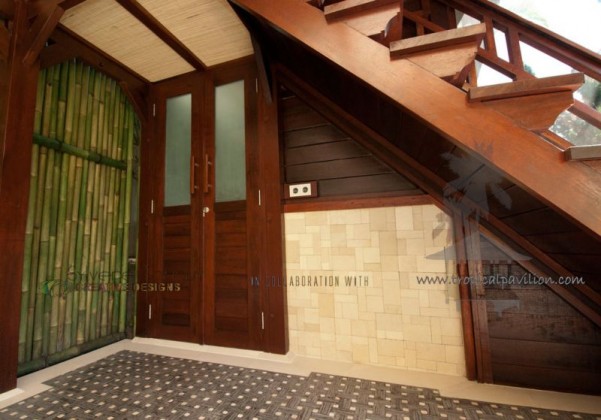
Wooden houses are a more ecological and economic alternative than homes made of traditional brick and concrete. Wood is not only a part of nature, but its use is beneficial for the environment. These homes are made from natural, non-petroleum materials that are recyclable and biodegradable and are also considered 'ecological'.
The wood used in sustainable construction is certified and originate in responsible logging: the manufacturers plant new trees for each tree they fell. For them, maintaining this balance is important.
Besides, building with wood requires less energy, has a lower environmental impact and smaller carbon footprint than conventional building methods: wood absorbs CO2.
Sustainable construction: Types of wooden houses
Made of logs: Built or assembled directly on the plot, using trunks that give it a characteristic final appearance. An advantage of this system is that the thickness of the wood acts as a wonderful interior humidity and temperature regulator. Square logs, which fit better against each other, can be used.
Heavy wooden framework: These structures are somewhat more complex; wooden beams are latched together to house large glass window surfaces.
Light wooden framework: This is the most common alternative and the one used in Canadian houses. A large amount of small components are used, that facilitate building modules, interchangeability and pre-manufacturing.
Mobile: These houses are mounted in the factory and transported in very large parts to their final destination. Houses can be made as a single part or in several sections, depending on the final size. The walls can be made of finished wood or other kinds of finishing.
Sustainable construction: False myths about wooden houses
Durability: While certain highly admired, solid concrete houses are ready to be torn down after 40 years, in some northern European countries there are wooden homes that have been inhabited for over 200 years.
Fires: fires are most commonly started in homes by items inside the home: a cigarette butt not put out properly, a short-circuit, etc. and what catches fire is the furniture inside, so the risk of fire is the same. If the fire is not put out soon, the wood catches fire but burns very slowly. The worst result is that the home will be reduced to ashes if the fire is not put out quickly. However, the high temperatures in a house made of concrete can cause cracks that may also result in having to tear down the home.
Source: http://www.activesustainability.com





